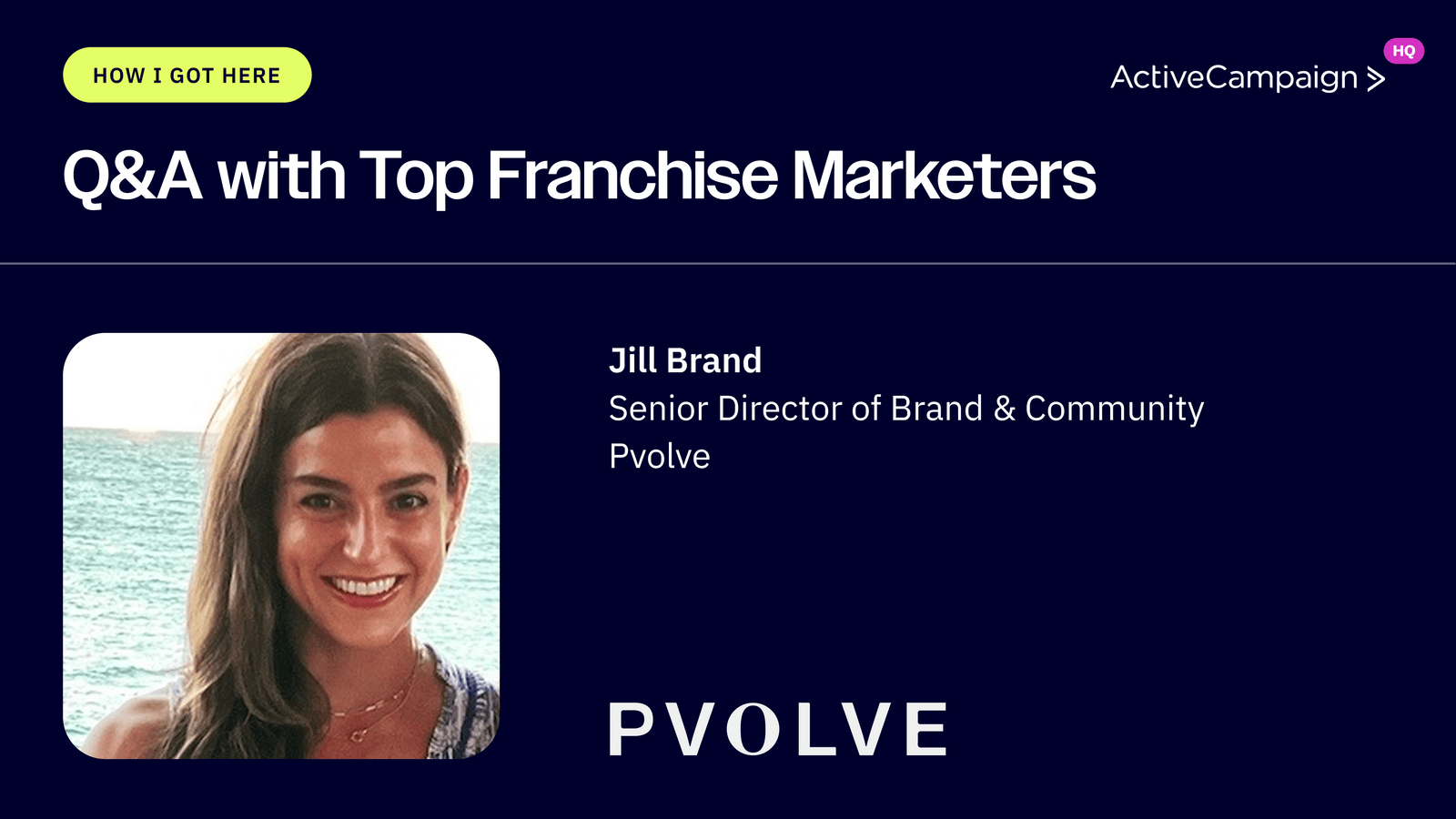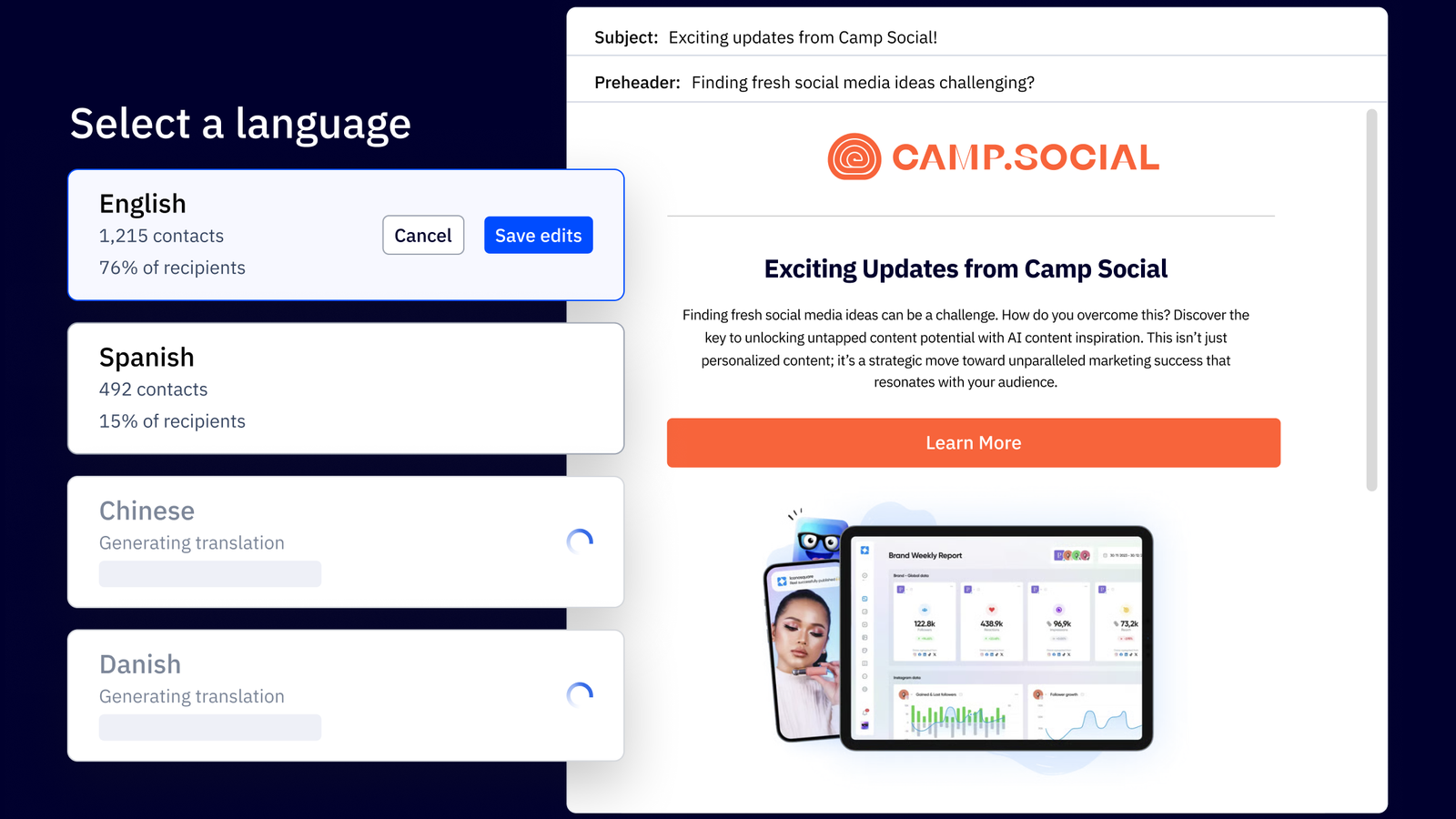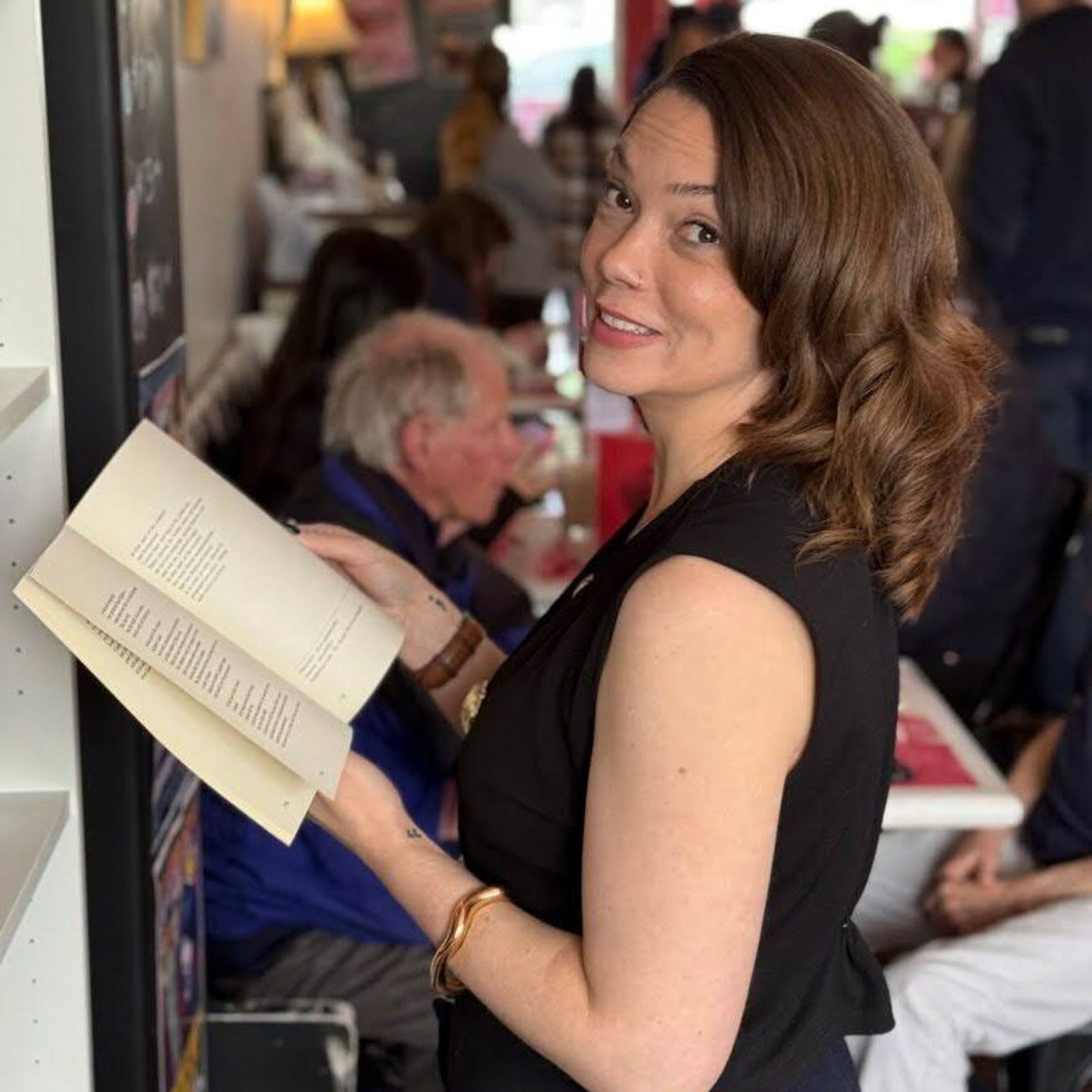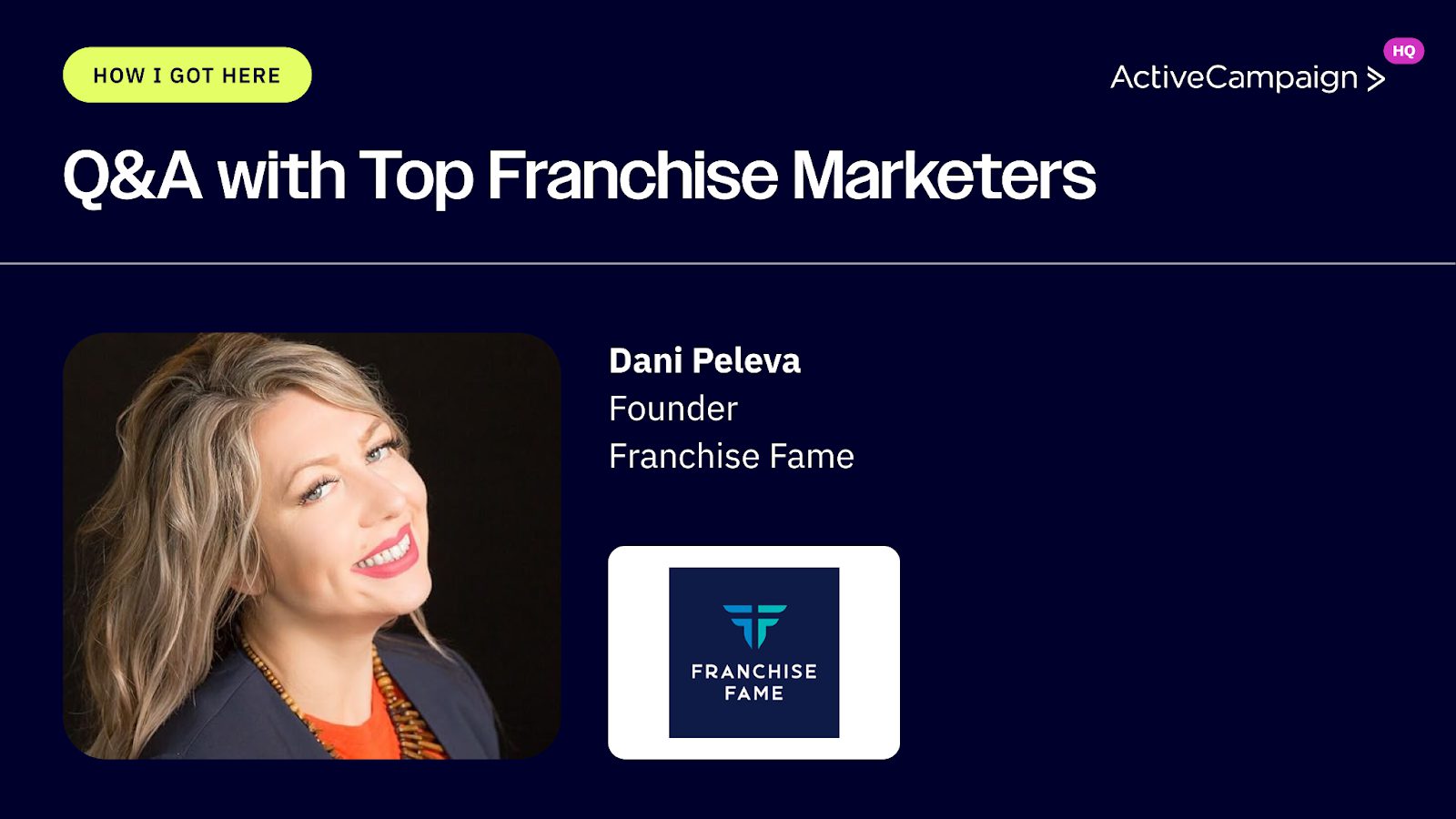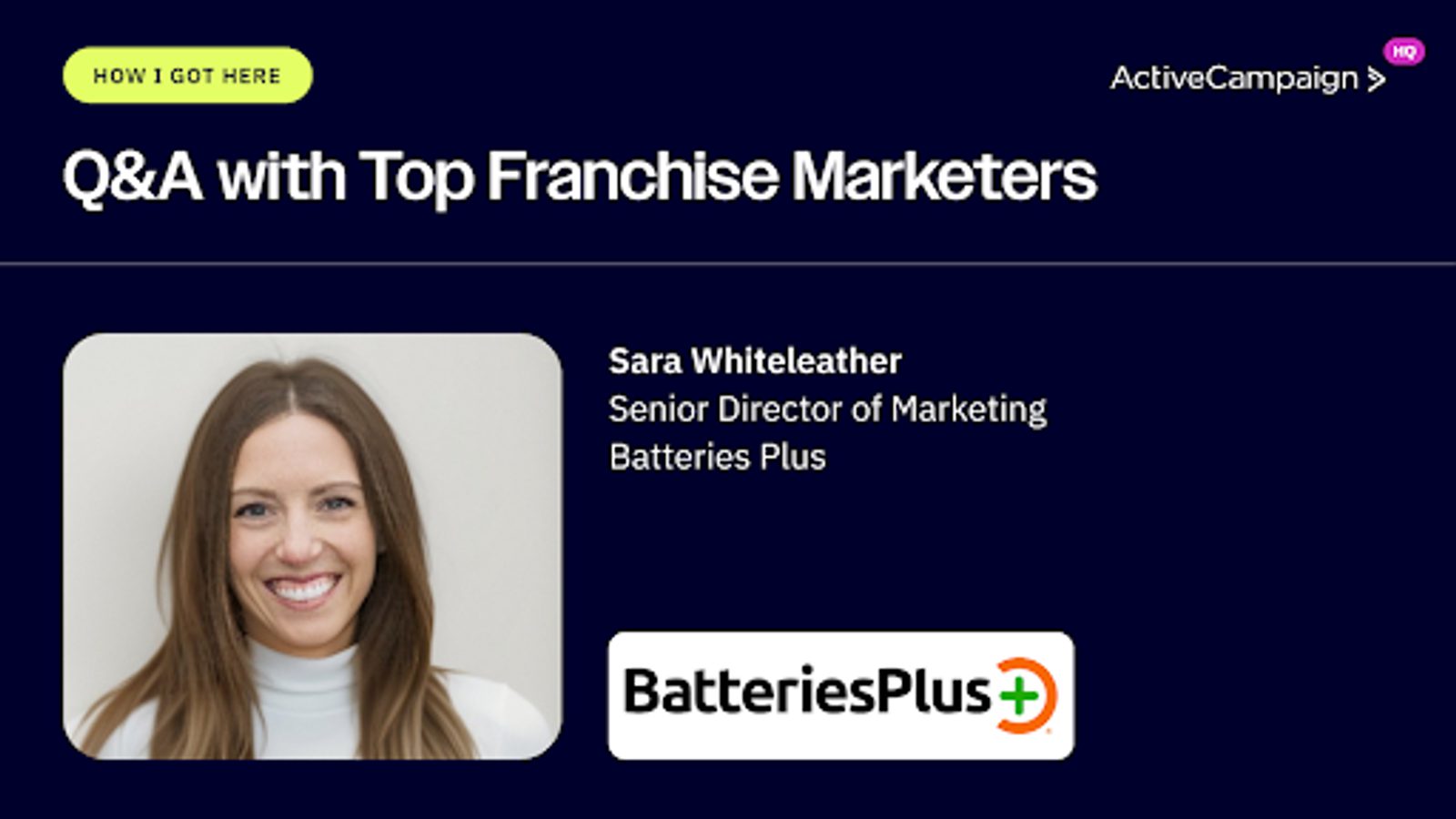Jill Brand may have started her franchise marketing journey just five years ago when she joined fitness franchise Pvolve as the Senior Director of Brand & Community, but her years of experience in multi-location marketing for Equinox helped her make impressive strides for Pvolve–which now has 22 locations across the U.S. and Canada–and her own career.
During her tenure, she’s helped orchestrate marketing around a celebrity partnership, helped the brand achieve record growth in the wake of the pandemic, and climbed the ladder to her current position as Head of Brand & Creative. Today, she spends her days ensuring that the Pvolve brand message is clear and is reflected through compelling creative that franchise owners are excited to share.
In our interview, Jill shares how her marketing approach changed when moving from a legacy brand to a newer player, how she balances brand consistency and variety, and why she thinks getting to work with franchisees leads to the best marketing outcomes for everyone.
How have you changed your approach to creative and marketing now that you’re working with franchisees rather than a multi-location corporate brand?
When you work for a corporate location, you are the decider. You want to work well with others and be a partner to the operator of each location, but at the end of the day, it is your discretion.
When you're dealing with a network of owners, they are the owners, and they have a lot more decision-making power. That sounds like a bad thing, but I think it ends up being a real benefit to both the owner and the corporate team because we both have so much skin in the game. You tend to really truly come to the best outcome. But it does require a bit more of a one-to-one service mindset. (While we do use different platforms for learning management and communication, as well as regular group calls, we have found that to truly deliver to the level we desire, it's best to hire a team of skilled franchise coaches who take a very one-on-one approach with our owners.)
In practice, this means the franchisees are more involved in marketing decisions. For example, we have different creative we can run during our presale campaigns: creative with our celebrity partner, Jennifer Aniston, creative with studio members in different demographics, etc. We offer the owners a variety of options and they get to choose what makes the most sense in their market. Instead of us saying, “Here’s the creative we’ve chosen for your studio,” we bring them in and ask, “What do you think is going to work best for your community?”
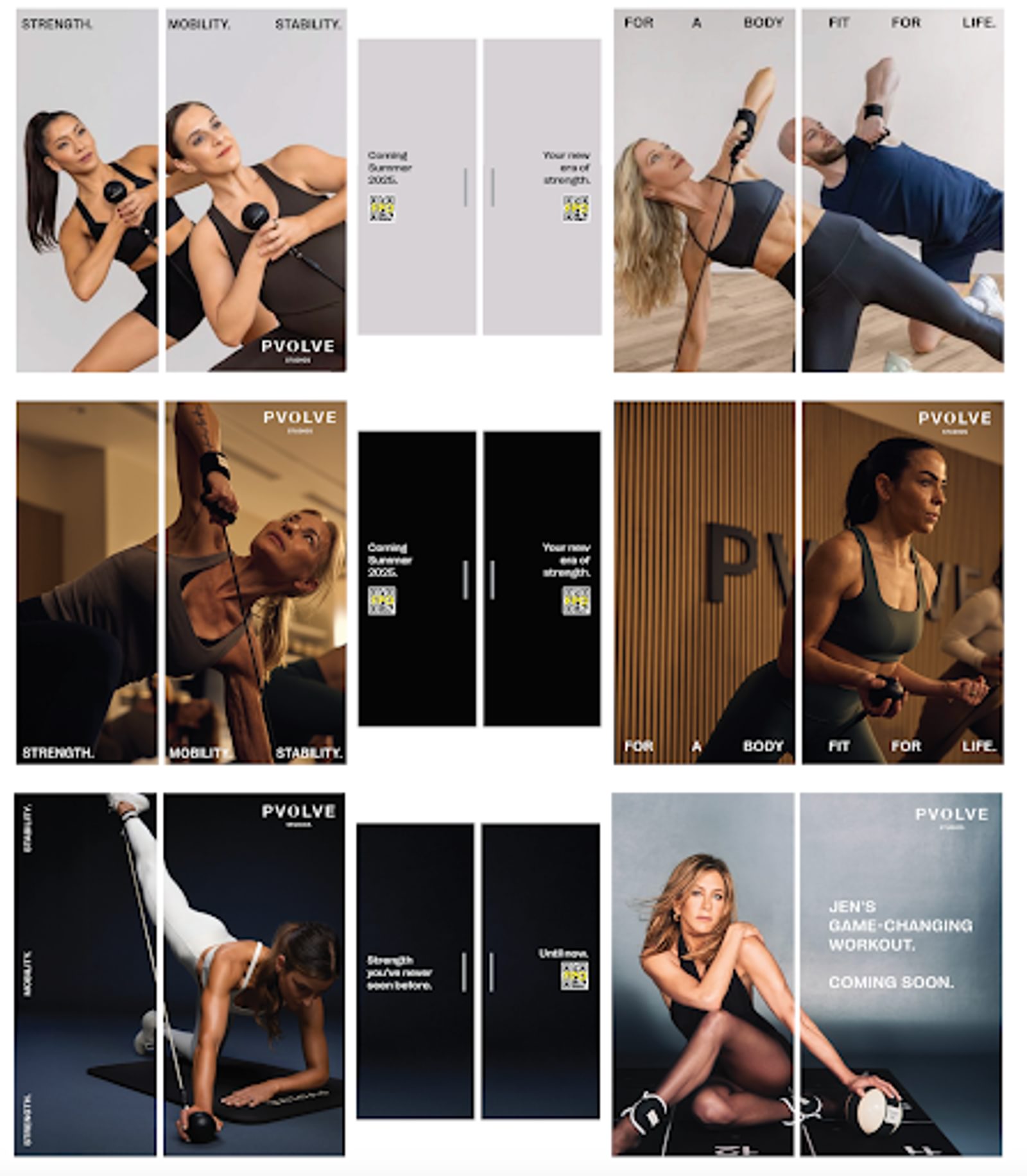
Example of pre-sale window options.
That said, you have to strike the right balance between collaboration and moving things forward. There can be a tendency, especially in the beginning with franchise marketing, to want every single owner’s opinion because they matter so much.
But perfect is the enemy of the good, and over-process slows everything down. One thing I like to consider to help me strike the right balance is whether I’m seeking more opinions because I really want them or because I think I’m supposed to.
"One thing I like to consider to help me strike the right balance is whether I’m seeking more opinions because I really want them or because I think I’m supposed to."
Pvolve is also a relatively new brand compared to Equinox. How did your approach to brand and marketing need to change when helping establish a new brand versus working for a legacy one?
It’s a completely different approach. Because we didn’t have brand recognition in many markets–especially five years ago when I joined–my work was so much around brand education. With Equinox, we were marketing the lifestyle; with Pvolve, I am educating on what this workout is and what the benefits that you get from it are.
What have been some of the most effective marketing tactics for building out that brand education?
On a brand level, one of our most effective channels is podcasts: having our leadership or our trainers on podcasts where they get to sit down and talk about Pvolve in long form.
When people take the time and hear the story about this workout and how it’s so distinct and how it’s the kind of thing you’ve been missing your whole life, it’s a no-brainer. They’re like, “Sign me up, I want that.” We usually pair appearances with a discount code so we can track the return, or use post-purchase surveys to understand where people heard about us. And we usually can just see spikes in organic traffic to the site after podcasts go live. We’ve also seen direct franchise sales attributed to podcasts, including an amazing multi-unit deal from a trade podcast.
When it comes to local marketing, we love pop-ups where we give people the chance to experience the workout. That’s why we have this whole methodical, structured pre-sale process where we take over a space near the studio and offer discounted classes regularly before we officially open. We drive a lot of membership sales that way.
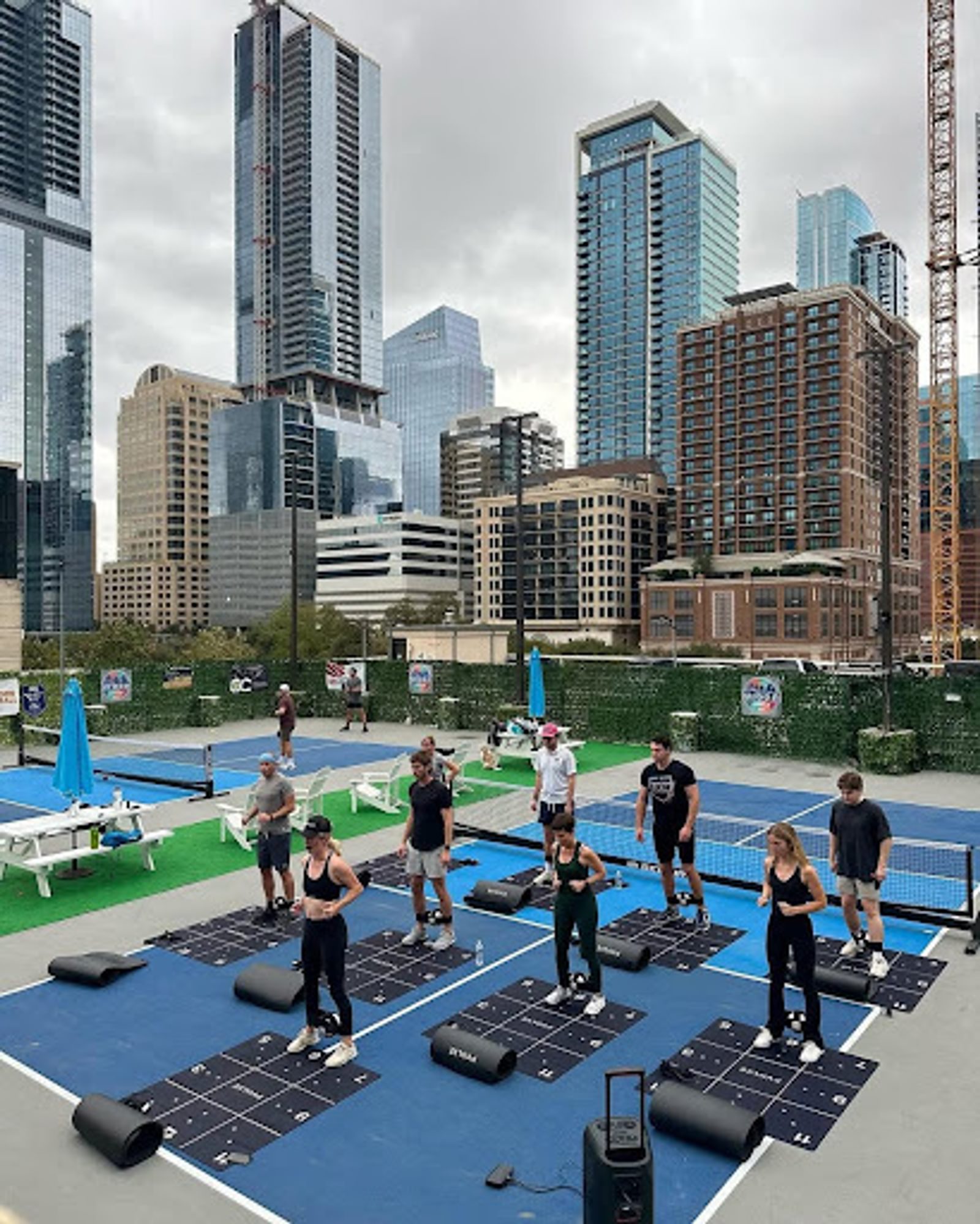
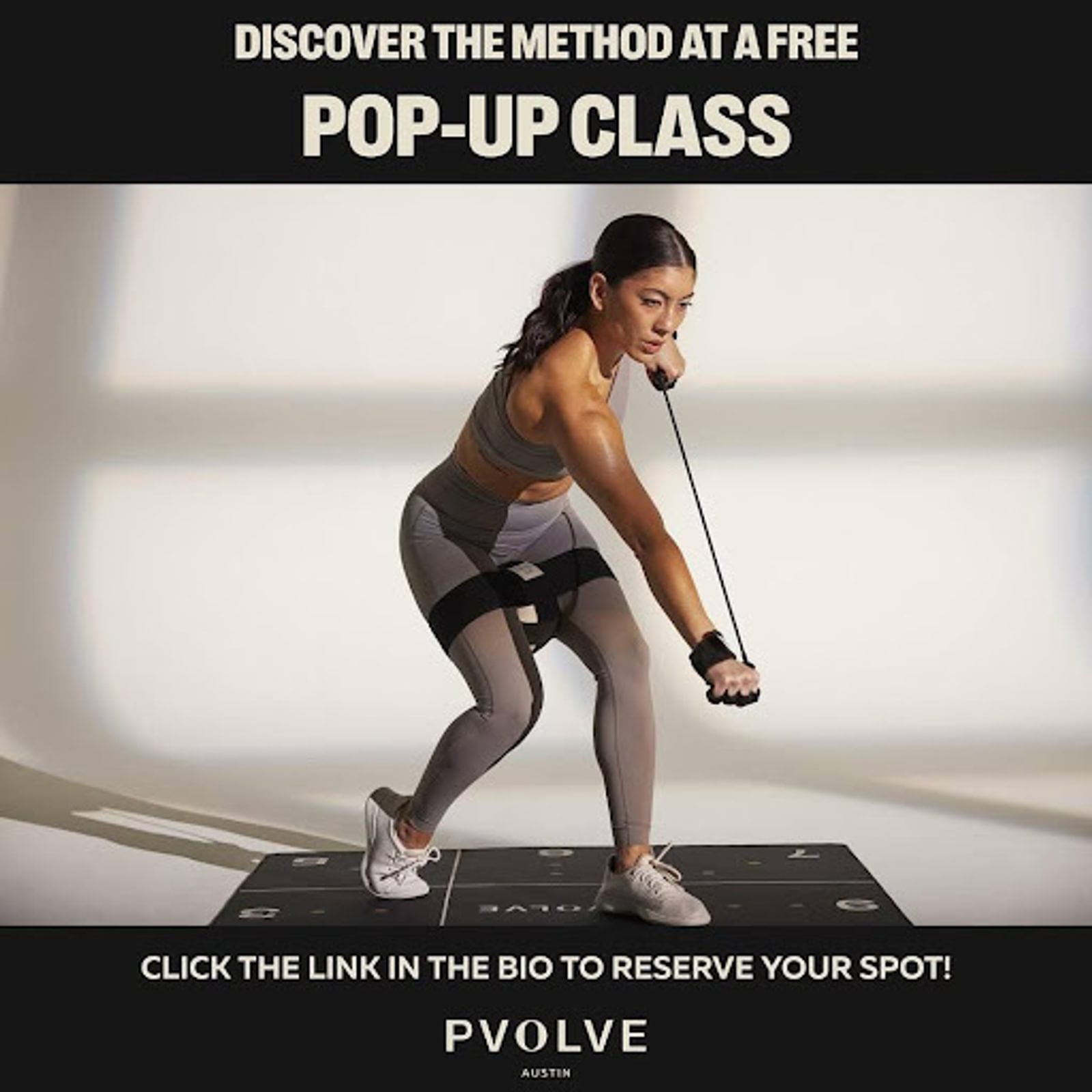
Promo post for pop-up classes in a new market
You all have a major celebrity partnership with Jennifer Aniston. Can you share how that came to be and how you’ve maximized that partnership on the brand and franchise level?
It was the craziest thing: She found us during COVID and fell in love with the workout, and her team reached out to us. Her joining the team was such a massive coup for us, not just because of her global reach but also because she’s such a well-established, well-trusted person in the wellness space. She was just a perfect fit — the kind of thing we would have on our vision board, but it felt too big to actually really dream of.
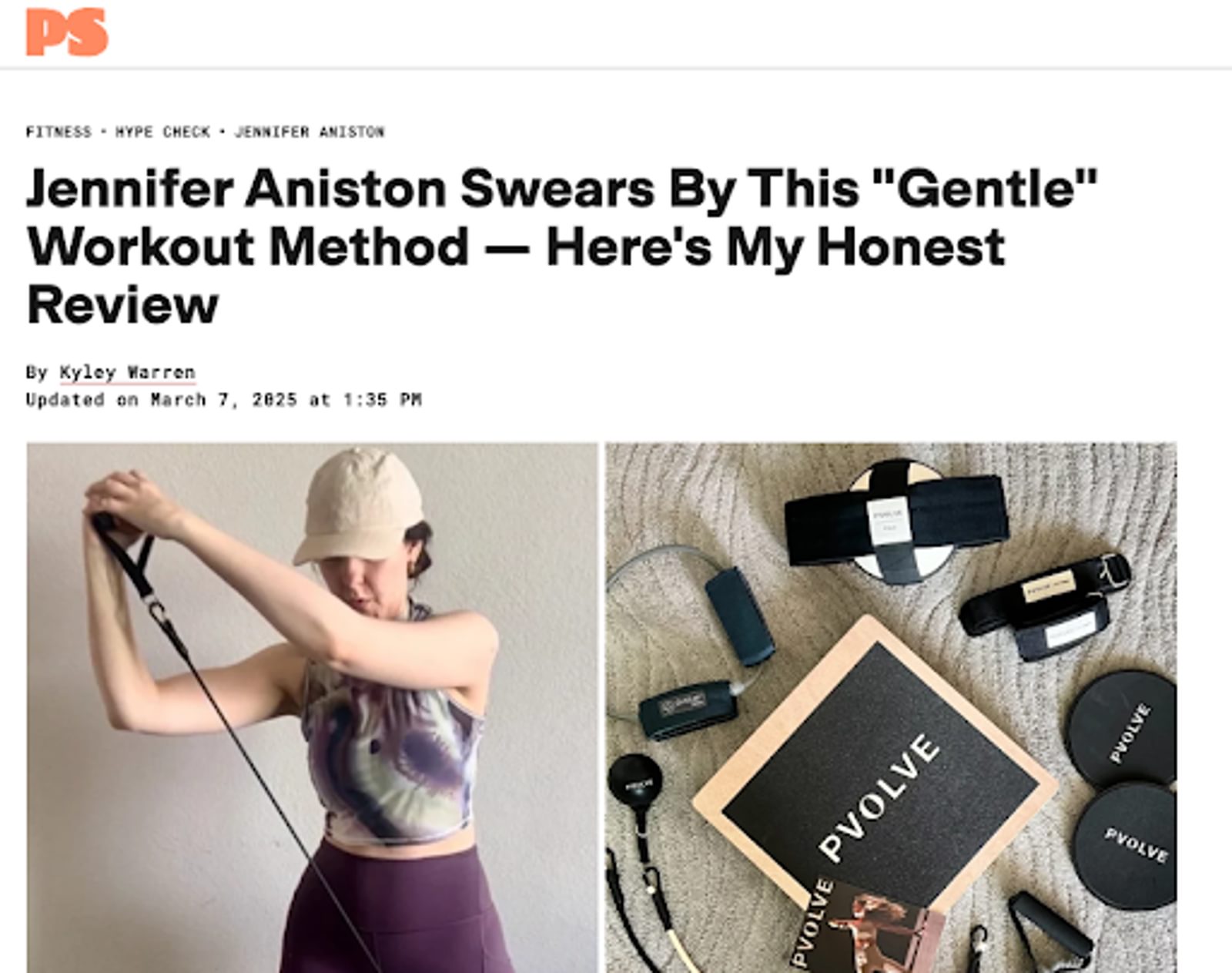
In terms of maximizing, we love being able to capture content with her for social. We do one or two shoots a year to refresh the imagery and use those images to fuel a lot of our assets. She talks about us in the press all the time, and we leverage those quotes in our marketing. And then, whenever we can, we try to launch other offerings with her, like a calendar that she has helped curate or a travel bundle of workout equipment that she takes on the road.
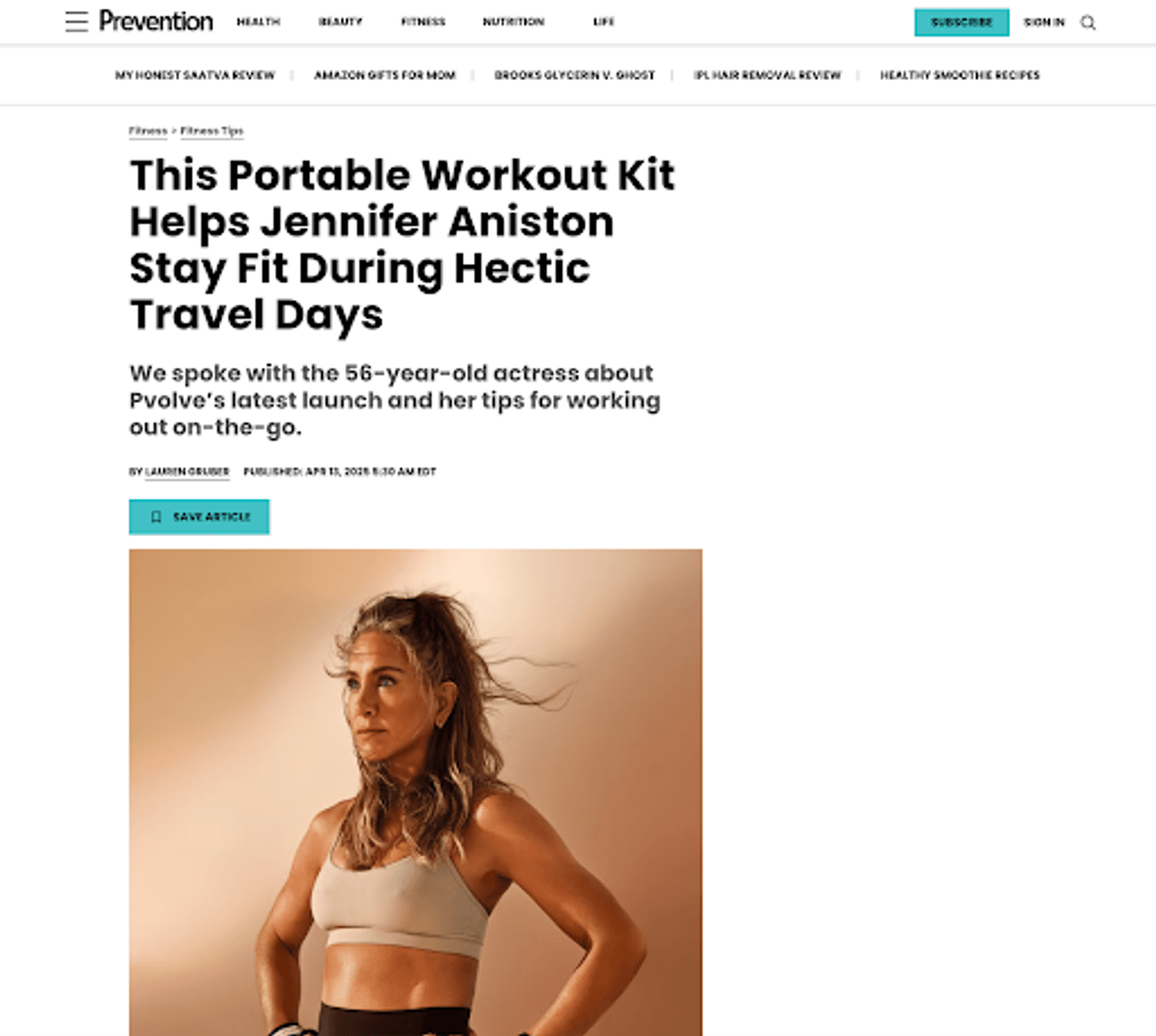
Pvolve is also able to get press coverage around launches like the travel bundle.
Do you have any tips for running a successful franchise marketing operation with a small team?
Finding the right agency partner can be incredibly powerful. We brought on an agency to help us with our emails, and that was a massive unlock, because they come in with the infrastructure of an agency: a designer, a copywriter, someone to help with strategy. Not only did that remove a tremendous amount of work from our creative team, it also gave us the resources of an agency without having to pay the overhead of a full-time employee.
Knowing when to lean on agency versus when it's time to bring in house is a really important muscle to work on. Ask yourself: Is this a crucial function for the business? And is it the kind of function that I can truly offer scaled support on today to deliver the impact I want? Or would the expertise and resources of an agency better serve me today? If the answer is that you can’t offer the same impact today as an agency can, then outsource for the time being until you develop the muscle in-house.
Are there any marketing tactics or mindsets that you’ve found particularly valuable that you wish more franchise marketers knew about?
One of the things I say all the time to my team is that we get sick of our marketing way before the consumer does. You may feel this intrinsic pressure to consistently change your message or your look, but the best thing you can do as you’re growing a brand is be consistent so that people know who you are and what you stand for.
That said, it’s important that you’re delivering a variety of brand-approved assets for franchises and refreshing that creative regularly. If they keep seeing the same things over and over again, they’re going to start to want some newness: new imagery, new layouts. If you don’t provide it, they will do what they need to do to drive their own business forward. They will go into Canva and they will create things that might not use a brand-approved font or might have the wrong spacing and alignment.
So it’s a balance of consistency and variety. Generally, we assess about quarterly. But sometimes a franchise owner will come to us with an ask, and we’ll make those assets available to everyone. For example, one of our markets has a massive pickleball facility, and they wanted us to create some specific assets to reach the people who use that pickleball facility. We figured they weren’t the only ones, so we added those assets for everyone.
What do you think separates great franchise marketers from average ones?
Creative. It all comes down to creative. And you don’t need to spend a gazillion dollars on shoots. There are so many less costly ways to execute good creative now than there used to be: leverage AI, leverage remote team members, or offshore designers. But bad creative will kill your brand before you even have a chance.

